#reclaimed materials
Explore tagged Tumblr posts
Text

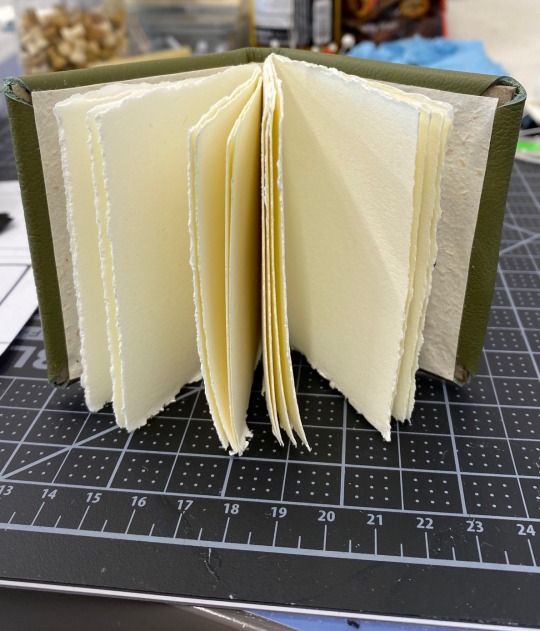

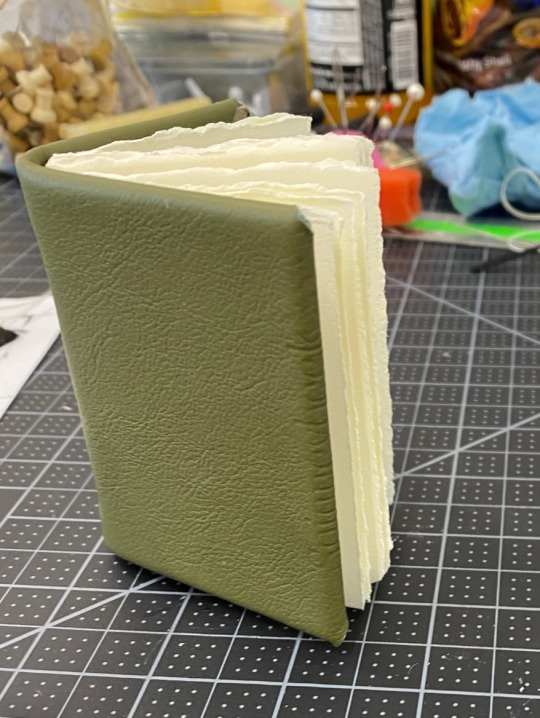
Prototype tiny book made with leather upholstery samples and printmaking paper offcuts
#it measures about 3in tall and 2 and a quarter in across while closed#diy#art stuff#bookmaking#bookbinding#reclaimed materials#crafting#artists on tumblr#book arts
73 notes
·
View notes
Note
Hello! I have been following your art for awhile now- I just had to refollow because Tumblr is a webbed site. If this is rude to say, ignore it, but I find your pieces inspiried! They truly are so cool. It got me to get a set of caran d' ache water soluble pastels myself! I have been hitting a bit of an art block lately, and I wanted to try something different than what I have been doing.
I just have a question about what you draw/paint ON. I see a lot of what you are describing as reclaimed support - what is it and how/where do you get that? It is wood correct? Is it a specific type of wood? Is there any specific way to prepare it for painting?
Thank you for taking the time for reading!
Hello there! Thanks for your ask! I'm really glad you're inspired and trying new things, and with my favorite art toy, no less. The wax pastels are truly a joy to work with. Like the crayon of my childhood dreams.
I typically paint on scrap wood. I will scavenge plywood, old shelves, lumber, furniture panels, flooring, etc. and prep them for painting. Part of my personal set of values I try to live by is to buy as little new things as possible and that counts for art stuff, too. I have a video about how I like to prep scrap wood here: https://youtu.be/9Ni8aIgB7F4?si=fBAaaB1fSWQC4bfS
Lately my friend and fellow artist Sasha reminded me that mounting paper on the scrap wood is also a thing! So I've been doing a bit of that lately, too, and it has been really nice for pastels and colored pencils. (I mount paper usually with Nori paste and/or matte acrylic medium.)
When I use words like "support" instead of scrap wood, sometimes that's just shorthand for "an archival panel of indeterminate material", such as my stash of 12"x16" PVC panels I got from a fellow art supply hoarder friend. It's strange to say "mixed media on plastic sign material" because that... doesn't necessarily bring up a clear idea...? But yeah, a lot (like the heron series) are done on sanded and gesso'd PVC panels that were once intended for outdoor signage.
Salvaging your own surfaces takes more time and work, but costs barely anything. It works with my rough and natural aesthetic so I lean into the wood's imperfections. Look, this one even has a hole in it! And you can see the grain and the pop-and-lock groove on the left. This was a piece of cedar flooring.

Boy he's a sad little guy isn't he
tl;dr I paint on flat sturdy things likely to last a long time. If you can sand, gesso, and attach wire hanging hardware to the back-- you're good. Go nuts.
25 notes
·
View notes
Text



http://alicewisbeystudio.etsy.com
Some more Jean Arp inspired abstract paintings
#art#artists on tumblr#artist#my art#artists#abstract#homedecor#rugart#tufted rug#rug tufting#jean arp#paint#process#painting#automatic drawing#drawings#artists on etsy#etsyhandmade#etsyuk#etsyseller#sketch#artists on instagram#fine art#contemporary art#artwork#aesthetic#autistic artist#reclaimed materials#study#drawing
13 notes
·
View notes
Text


Making some wall quilts from these fabric samples.
#process#textiles#sewing#fiber#fiber crafts#quilting#quilt#upcycled#upcycle#recreative#reclaimed materials
11 notes
·
View notes
Text
LED tape strips are surprisingly strong and resilient. i've had two reels in my materials box for a very long time that i originally saved from the bin, they were part of a shop display from a former workplace of mine. these poor diodes had been torn up from their adhesive backing and were really in a sorry state; completely twisted, bunched and stuck together. took five minutes to straighten and testing them and found they were basically still perfect! if you're familiar with these cheap rgb LED strips at all they are basically a dream to work with too, you can easily cut them to length and wire them up in a variety of configurations. i'm using these ones to make a large light table/box for tracing. if anyone is interested at all let me know i can post some pics, not bothered otherwise lol. even though it is kind of an interesting project because i;m also repurposing the fresnel+diffuser layers from a large television...
3 notes
·
View notes
Text

A series entitled "The Hollow Men", circa 1988: following a minor fascination for the animation in Pink Floyd's The Wall and a university course on poetry where the professor infected us with her obsession for T. S. Elliott's famous poem of the same name. I had just started experimenting with different drawing media, following my first drawing class and reading my book on Paul Klee and letting go of the restrictions of technical perfection... the series was done on reclaimed packing sheets that feel and look like extra thick card stock, including the slight matte finish which helped the dry pastels to stick to it. This helped me fall in love with messy art materials.
Each is approx: 50cm x 40cm
#art#artwork#learning#art process#creativity#inspiration#hand drawn#drawings#drawing#artist#dry pastel#material exploration#expressionism#abstract expressionism#abstract expressionist art#expressionistic#neo expressionism#reclaimed materials
2 notes
·
View notes
Text
View from the Construction Site

We love working with the reclaimed timbers. This will be a luxurious pool house once we're done with construction!
3 notes
·
View notes
Photo

If I told my younger, impatient self that I would be doing each painting *twice*, once in brown or gray tones and then with color, I wouldn’t have believed it. But, boy . .

. . it made so much difference in my work to add a few extra steps! Oil painting on a reclaimed wooden cabinet panel, about 10x11 inches or 25x28 cm. The creek looks exactly like this today. (also the edge of the panel made a nice, all-in-one frame for the painting)

#artists on tumblr#artists#women artists#nature and landscape#waterscape#oil painting#reclaimed materials#paintblr#spring
20 notes
·
View notes
Text

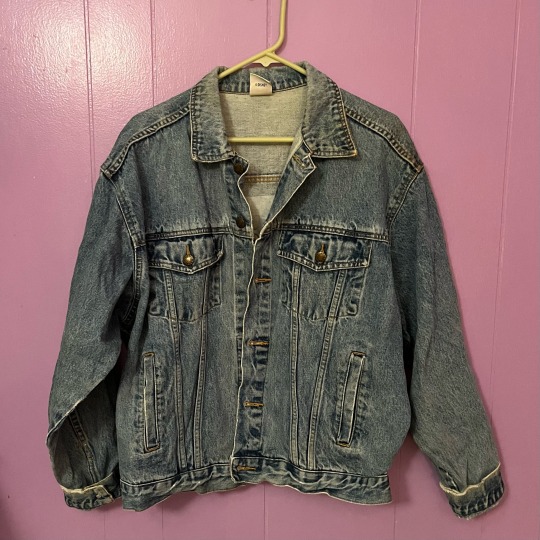
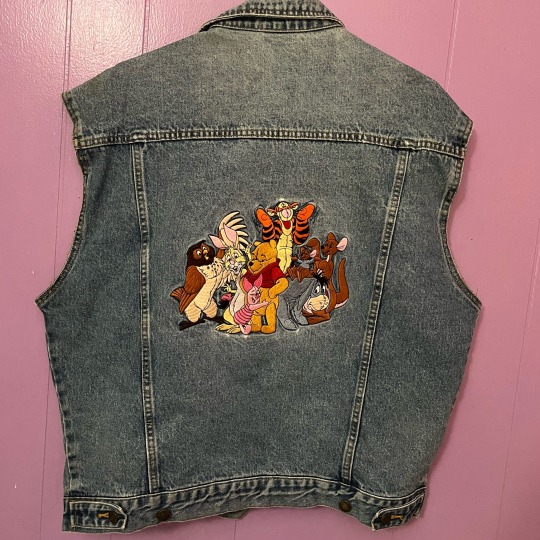

Work in progress.
This vintage denim jacket is in rough shape with lots of frayed edges and stains. So I’m going to up-cycle it, starting with the sleeves.
I have some flannel fabric just lying around and waiting to be turned into sleeves
#vintage denim#denim jacket#Jean jacket#disney#whinnie the pooh#upcycle#reclaimed materials#cute#sewing project#thrifting#I found this at a yard sale actually#but that’s close enough#nostalgia
3 notes
·
View notes
Text

Found a carpenter bee burrow in a board, so it was sacrificed for science

The board was resawn on the band saw to get a cross section of the burrow. Three carpenters were sharing this burrow.
#I didn’t expect there to be three in one burrrow#woodworking#reclaimed wood#reclaimed materials#carpenter bee#burrow#burrowing insects
5 notes
·
View notes
Text
Repost: Trash Heap
Marie France Roy Continue reading Untitled
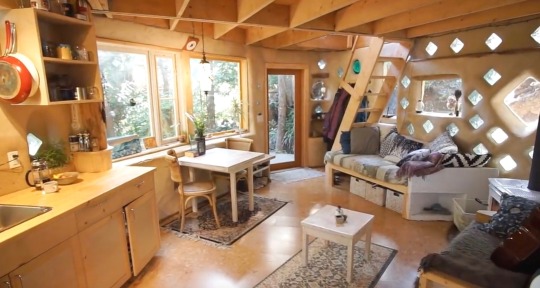
View On WordPress
3 notes
·
View notes
Text
Beyond Brick and Mortar: Eco-Friendly Materials for a Greener Build
In an era when environmental sustainability is of utmost importance, the construction industry is undergoing transformational change. While traditional building materials such as brick and mortar are more durable and long-lasting, the environmental impact is greater.
The extraction, manufacture and transportation of these materials contributes to increased carbon emissions and reduced resources. Environmentally friendly building materials are becoming increasingly popular to address these concerns. This guide examines the availability, benefits and contribution of various environmentally friendly products to green design.
Understanding Eco-Friendly Building Materials:
Eco-friendly building materials are those that reduce environmental impact through their life cycle from manufacturing to disposal. These products are generally derived from renewable sources, require less energy to produce, and reduce waste and emissions. The main characteristics of eco-friendly materials are durability, recyclability, low toxicity and energy efficiency.
Categories of Eco-Friendly Building Materials
1. Natural Building Materials:
a. Bamboo:
Bamboo is a highly renewable resource, growing faster than traditional wood. It is durable, flexible and can be used in a variety of construction projects including floors, walls and building supports. Growing bamboo also helps sequester carbon, making it a carbon-free resource.
b. Cork:
Cork is obtained from the bark of oak trees, and is a renewable and recyclable resource. Used for flooring, insulation and as a sound barrier. Corks can be harvested without harvesting, allowing them to continue absorbing carbon dioxide.
c. Straw Bales:
Straw bales are a by-product of rice agriculture and provide excellent protective properties. It is used in wall construction and is energy efficient, reducing unnecessary heating and cooling. Building straw bales also encourages the use of local resources, and reduces vehicle emissions.
2. Recycled Materials:
a. Recycled Steel:
Steel is one of the most recycled materials in the world. Recycled steel can be used in construction, reducing the need for new steel. Not only does this conserve raw materials, it also significantly reduces energy consumption and greenhouse gas emissions.
b. Recycled Plastic:
Plastic waste can be recycled into wood composite, insulation and roofing tile and other building materials. The use of recycled plastics helps reduce waste disposal and the demand for raw plastics, which are energy-intensive and non- polluting.
c. Reclaimed Wood
Reclaimed wood is sourced from old buildings, bridges and other structures. It adds a unique aesthetic to new construction and reduces the need for new trees, preserving forests and reducing carbon footprints associated with harvesting and processing trees.
3. Innovative Eco-Friendly Materials:
a. Hempcrete:
Hempcrete is a bio-composite blended with a powder-based binder derived from the fibers of the hemp plant. It’s lightweight, protective, and carbon-negative, because the hemp plant absorbs carbon dioxide as it grows. The walls are made of hempcrete, which provides heat and sound insulation.
b. Ferrock:
Ferrock is a durable concrete alternative made from recycled materials, including metal dust and silica. It is stronger than traditional concrete and absorbs carbon dioxide as it is produced, making it carbon negative. Ferroc is used in building products, reducing the carbon footprint of the construction industry.
c. Mycelium:
Mycelium, the root component of fungi, can be grown in pots to make lightweight, biodegradable building materials. Mycelium-based products are used for insulation, wall panels and even furniture. They are renewable, compostable and require little energy to produce.
Also Read : WHAT ARE REFRACTORY BRICK AND THEIR APPLICATIONS?
Benefits of Eco-Friendly Building Materials A. Environmental Benefits:
a. Reduced Carbon Footprint:
Eco-friendly products generally have low physical energy, which means they require less energy to produce and transport. Materials such as bamboo, hemp, and recycled metal help reduce greenhouse gas emissions from manufacturing.
b. Conservation of Natural Resources:
The use of renewable energy and recycling helps conserve limited natural resources. Bamboo, for example, is recycled faster than traditional wood, and recycling reduces unnecessary virgin materials.
c. Waste Reduction:
Many environmentally friendly or recyclable products are made from waste at the end of their life. This reduces the amount of construction and demolition waste sent to landfills.

Also Read : Smart Construction Technology
B. Health Benefits:
a. Improved Indoor Air Quality:
Natural and non-toxic materials such as cork and mycelium emit fewer volatile organic compounds (VOCs) and other harmful chemicals, creating a healthier indoor environment
b. Thermal and Acoustic Comfort:
Materials such as straw bales, hemp and cork provide excellent insulation and soundproofing, enhancing the comfort of the building’s occupants.
C. Economic Benefits:
a. Long-Term Savings:
While the cost of some environmentally friendly solutions can be significant, they often result in long-term savings through lower energy costs and lower maintenance costs. For example, well-insulated homes reduce heating and cooling costs.
b. Increased Property Value:
Buildings built using sustainable materials and practices tend to have higher market values due to increased consumer awareness and demand for green buildings.
Challenges and Considerations
1. Cost:
While eco-friendly materials can result in long-term savings, the initial cost can be higher than conventional materials. However, as technology improves and demand increases, prices are expected to become more competitive.
2. Availability:
Some eco-friendly products may not be readily available in all communities, potentially creating transport-related environmental issues. This issue can be mitigated by sourcing locally whenever possible.
3. Building Codes and Regulations:
Eco-friendly materials may not always meet existing building codes and standards, posing challenges for builders and homeowners. It’s important to work with architects and builders who are familiar with sustainable building practices to guide these codes.
Case Studies
a. Bullitt Center, Seattle
Dubbed the “greenest mall in the world,” the Bullitt Center in Seattle demonstrates the power of environmentally friendly materials. The building features FSC certified timber, recycled steel and advanced insulation. It generates its own energy through solar panels and collects rainwater for recycling.
b. The Edge, Amsterdam
Based in Amsterdam, The Edge is one of the most sustainable office buildings in the world, incorporating environmentally friendly features and state-of-the-art technology. It uses recycled materials, a green roof and energy-efficient systems to achieve a zero-energy environment.
c. Hemp House, Asheville
Located in Asheville, North Carolina, the Hemp House is made entirely of hempcrete. It provides excellent insulation, maintains waterproofing, and is carbon-free. The house exemplifies the benefits of using bio-based materials in construction.
Future Trends
Advancements in Material Science
Ongoing research in the physical sciences leads to the development of new and effective environmentally friendly products. Innovations such as 3D-printed, organic composites and self-healing concrete hold promise for future sustainable construction.
Circular Economy
The concept of a circular economy, of recycling and reusing is gaining momentum. This method aims to eliminate waste and create a closed system in construction projects.
Green Certifications and Standards
Green building construction certifications, such as LEED (Leadership in Energy and Environmental Design) and BREEAM (Building Research and Installation Environmental Assessment Method), encourage the use of environmentally friendly materials. These standards encourage architects to adopt sustainable practices and materials.
Conclusion:
Switching to environmentally friendly building materials is not only necessary to reduce the impact of construction on the environment but also provides many benefits in terms of health, safety and financial savings -Adopting these future-friendly products and practices is an important step towards mitigating climate change and promoting a healthier planet for future generations.
Adopting these measures and practices is an important step towards mitigating climate change and promoting a healthier planet for future generations. The construction industry plays a major role in global carbon emissions, and switching to sustainable construction practices can provide significant environmental benefits. This shift is driven not only by environmental concerns but also by the desire for healthier environments and long-term economic benefits.
The adoption of environmentally friendly materials is also evidence of a new spirit in the construction industry. Advances in physical science and technology constantly expand the possibilities of sustainable architecture. From bio-based materials like hempcrete and mycelium to advanced recycled materials, the range of options is broad, making it easier for manufacturers to find the right materials to carry and perform various construction functions.
Furthermore, building certification and the development of green standards encourage the widespread use of sustainable practices. Certifications such as LEED and BREEAM provide a framework for measuring and improving the sustainability of buildings, guiding architects, builders and developers in their efforts to build environmentally friendly buildings.
This certification not only helps to reduce the environmental carbon footprint of private buildings but also creates a culture of sustainable construction at the field level.
Future architecture depends on the continued integration of environmentally friendly and sustainable practices. As businesses move towards a circular economy, where materials are recycled and reused, the potential for waste reduction and conservation increases. This approach and the broader objectives of sustainable development, which seeks to balance economic development with environmental management and social welfare.
In conclusion, the adoption of environmentally friendly building materials represents a significant opportunity to transform the construction industry into a force for positive environmental change. By prioritizing sustainability in the construction industry we can minimize the ecological impact of the built environment, enhance the health and well-being of residents, and we’ve got long-term economic benefits.
The journey to green building is not without its challenges, but the rewards are great and far-reaching. Through continued innovation, collaboration and a commitment to sustainable practices, we can create a future where our ways of doing things are in harmony with the natural world, and ensure the planet thrives for generations to come.
0 notes
Text





A big pink ear rug
#art#artists on tumblr#artist#my art#artists#abstract#homedecor#painting#rugart#tufted rug#weird stuff#weird art#wall decor#soft sculpture#sculpture#artists on etsy#autistic artist#fine art#contemporary art#alternative#artwork#etsyhandmade#etsyseller#etsyuk#earrings#room decor#oddcore#oddities#tuftedart#reclaimed materials
8 notes
·
View notes
Text
0 notes
Photo
Reclaim, Reuse, Recycle.

Reclaimed material wall, Kent, England. Photo by India Hobson via Ūla Maria Studio.
207 notes
·
View notes
Text

A series entitled "The Hollow Men", circa 1988: following a minor fascination for the animation in Pink Floyd's The Wall and a university course on poetry where the professor infected us with her obsession for T. S. Elliott's famous poem of the same name. I had just started experimenting with different drawing media, following my first drawing class and reading my book on Paul Klee and letting go of the restrictions of technical perfection... the series was done on reclaimed packing sheets that feel and look like extra thick card stock, including the slight matte finish which helped the dry pastels to stick to it. This helped me fall in love with messy art materials.
Each is approx: 50cm x 40cm
#art#artwork#art process#teaching#creativity#learning#inspiration#dry pastel#drawings#drawing#hand drawn#figure painting#expressionism#neoexpressionism#pseudo-abstract#material exploration#reclaimed materials
1 note
·
View note